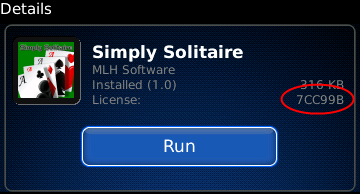

ProRes RAW is missing basic ingredients that make RAW useful in the first place, and by adopting it, you will be shackling yourself to the restrictions of proprietary mechanisms that have plagued us with ProRes for many years. but this is one of those very rare instances where you should believe the hype.

Of course I’ve only just touched the tip of the iceberg. ProRes has already established itself as an industry standard. It’s not just FCP taking advantage of this as several NLE’s can use ProRes too. This makes for much smoother editing as it’s less processor intensive and much easier to manage.
#Slimraw license key series#
For example PRORES RAW is a continuous video stream whereas DNG is a series of still images. Mark, There are huge advantages of ProRes RAW over RAW DNG. Of course, you can only edit those formats in Resolve but, to my understanding, any NLE could implement support for them if they wanted to. The other reason would be because there's no real advantage to ProRes RAW over the 3:1 and 4:1 compressed cDNG formats that the Pocket 4K can already record. Mark Grgurev wrote:One of the reasons they may not support Prores RAW in-camera is because it's exclusive to Atomos and FCPX at the moment. So, its so complicated, you wonder why they didn't just do a version of hdmi 2, tb3, or USB 3.1 compatible with standard equipment to start with (in HDMI you could just output 2kp240 monochrome frames, each frame one of the four 4kp60 Bayer colors in rotation).
#Slimraw license key plus#
So, 8 10 bit raw pixels could go into five 16 bit hdmi pixel values (4:4:4, plus 4:4 of the next 4:4:4 pixel, with the left over going to another pixel and a bit). Another is to do bit packing in a higher bit depth. However 4kp30 might go into HDMI 4kp60 4:2:2, but no 4kp60 raw. But that can be maxed out, and the HDMI might not support it. 4:4:4 provides three positions plus an alpha.
#Slimraw license key 1080p#
See, at 1080p you need a place to park 4 pixels in a 1080p signal. But, using some creative design, you can do what is called data packing into the HDMI data structures. But we seem to be stuck with a pre HDMI 1.3 version. The latest 1.4 version was reconfigurable to take HDMI 2's 4kp50 4:2:0 mode. Old HDMI was a data pipe of prescribed format, new hdmi is more a data pipe.

If they made recorders to support it, things would be better. USB 3.1 recording would be preferable, but does it support newer USB 3.1. It still won't be useful unless the version of HDMI supports high enough data rates. The industry being slow and dense only Axiom tried it, but apparently HDMI recorders stuffed up the result (not pixel accurate recording). Many years ago I put forward an idea to pack 4k raw into a 1080p HDMI signal.

I remember seeing that video too and was part of the reason (by confusion) for my original post.īelieve it or not, it is supposed to be 1080p. If there's enough demand for it, then Panasonic might do it.then Sony.then Canon in five years on a $15k camera, but someone will hack the T2i to output raw before that. It might be possible in the future (even with the current batch of cameras, since raw output would be less processor intensive than the current crop of compressed codecs), but it remains to be seen. If you want to get technical and look to the near future, the Atomos Ninja V will record Prores raw via HDMI (the only input it has), but no camera (currently) outputs raw over HDMI.Īt NAB, Atomos said "Tell your camera maker you want raw over HDMI". So even if a camera could output Raw via HDMI, there are currently no recorders that can record Raw via HDMI. Denny Smith wrote:Fine, but you do know the Atomos Inferno only records Raw via its SDI inputs also, as does the Cinvergent Design recorder.


 0 kommentar(er)
0 kommentar(er)
